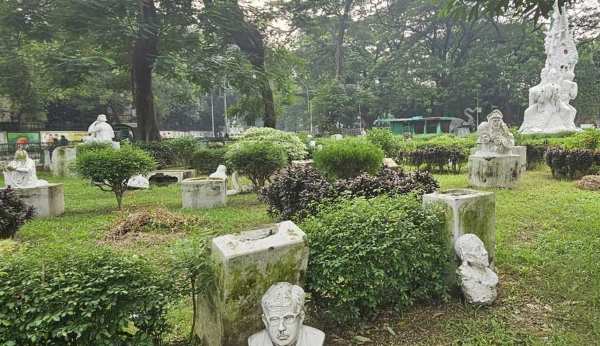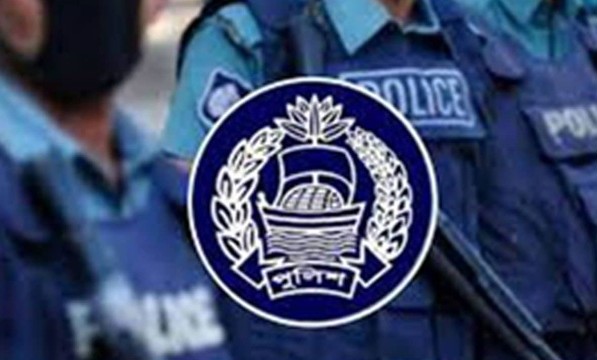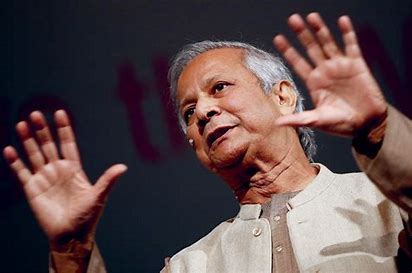
Swadhinata Sangram Square sustained extensive damage
Liberation’s Legacy in Ruin: The Crumbling State of Bangladesh’s Iconic Sculptures
Renowned figures such as Rabindranath Tagore, Kazi Nazrul Islam, Lalon Fakir, and Jagadish Chandra Bose have become unrecognizable due to the deterioration of their sculptures.
At Dhaka University, the “Swadhinata Sangram” (Liberation Struggle) sculpture features a series of busts that commemorate the bloody history of Bangladesh's struggle for independence. This sculpture, which is the largest in Bangladesh by area, also includes representations of over 100 global icons of freedom and liberation. Unfortunately, during the violence surrounding the July-August uprising, this sculpture square suffered extensive damage. Statues of 18 individuals who died in various movements and struggles were destroyed. Furthermore, the main sculpture depicting Bangabandhu Sheikh Mujibur Rahman’s index finger is broken, and many smaller statues have been knocked over.
While not as severely neglected as the “Swadhinata Sangram,” other sculptures at Dhaka University are also in poor condition. The university administration has not taken any steps to restore these artworks. Dastagir Chowdhury, a student in the Department of the History of Art at the Faculty of Fine Arts, stated, "On August 5th, the Swadhinata Sangram sculpture square was vandalized. I believe this acts as an attempt to erase Bangladesh’s history. The university administration must prioritize its repair."
Nasimul Khabir Duke, an associate professor and chairman of the Sculpture Department in the Faculty of Fine Arts, noted, "I visited the site and discovered extensive damage. While complete reconstruction may be nearly impossible since the sculptor, Shamim Sikder, has passed away, a realistic plan could help partially restore the sculpture."
Raju Sculpture: Unprotected
The “Anti-Terrorism Raju Sculpture” was erected in memory of Moin Hossain Raju, a central leader of the Bangladesh Chhatra Union, who was fatally shot during a protest against terrorism on March 13, 1992. This sculpture became a focal point during the July-August uprising, yet it now lies neglected, covered in moss, with its white surface darkened in many areas. Tiles have fallen off the platform, and the base is marred by graffiti and slogans. Homeless individuals have taken residence around the sculpture, breaking the iron fences and leaving their belongings scattered in the vicinity.
Swaparjita Swadhinata – A Neglected Legacy
The "Swaparjita Swadhinata” (Self-Earned Freedom) sculpture, erected in 1988 to honor the Liberation War and its freedom fighters, stands near DUS Square beside the Teacher-Student Centre (TSC) of Dhaka University. It features the figure of a farmer alongside statues of four armed male and female fighters. Sadly, this sculpture is in deteriorating condition. Originally white, it has become darkened due to algae and dirt accumulation. Although there is a raised pedestal in front of it, the surrounding area remains unfinished and unpaved. In November of last year, the sculpture was vandalized with black paint, yet the culprits were never identified.
Aparajeyo Bangla – No Better
Situated in front of the Faculty of Arts, the “Aparajeyo Bangla” (Unyielding Bengal) sculpture commemorates three standing freedom fighters from the Liberation War. However, its present condition is disappointing, with moss covering its details and slogans defacing its pedestal. Without any security fencing, individuals frequently climb onto the sculpture, exacerbating its degradation.
(This article draws on information and images from a bdnews24.com report published on December 14, 2024.)



